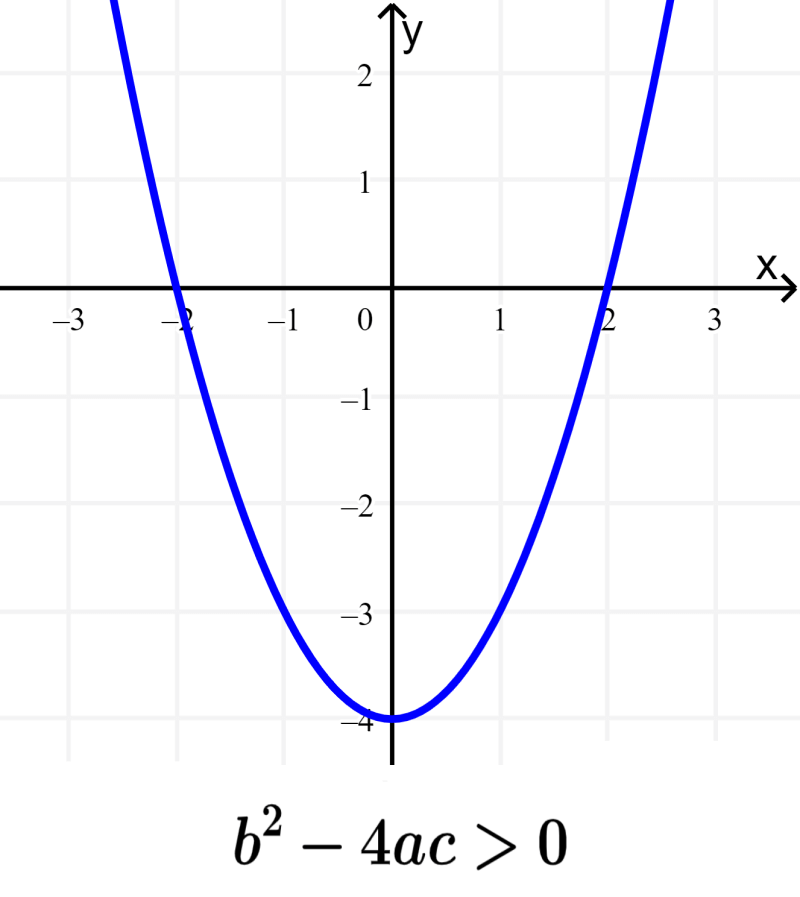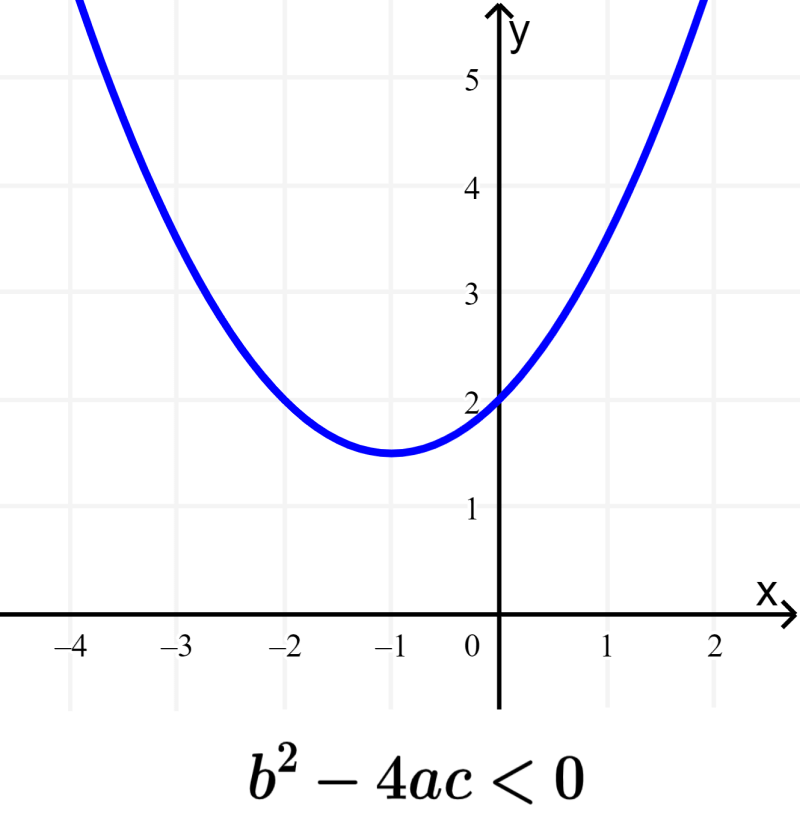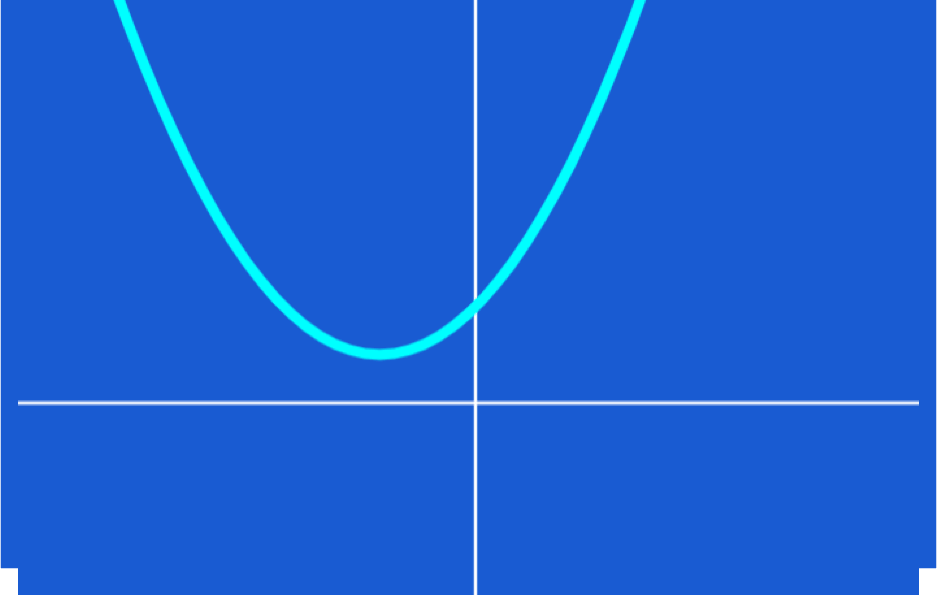The number of roots in a polynomial is equal to the degree of that polynomial. For example, in quadratic polynomials, we will always have two roots counted by multiplicity. These roots could be real or complex depending on the determinant of the quadratic equation.
Here, we will learn about the Fundamental Theorem of Algebra and the Conjugate Roots Theorem. We will use these theorems to learn about the complex roots of a polynomial. In addition, we will look at some examples to learn how to obtain the complex roots of a quadratic polynomial using the quadratic formula.
How to know how many complex roots a polynomial has?
To determine how many complex roots a polynomial has, we have to use the fundamental theorem of algebra. This theorem tells us that:
Fundamental theorem of algebra
A polynomial $latex p(x)$ of degree n with complex coefficients has, counted with multiplicity, exactly n roots.
The part “counted with multiplicity” means that we have to count the roots by their multiplicity, that is, by the times they are repeated. For example, in the equation $latex {{(x-2)}^3}(x+2)=0$, we have a polynomial of degree four.
However, we can only count two real roots. This is because the root at $latex x=2$ is a multiple root with a multiplicity of three. Therefore, the total number of roots, when counting multiplicity, is four.
Complex roots of a quadratic polynomial
First, let’s start by considering the conjugate roots theorem:
Conjugate roots theorem
We have that $latex p(x)$ is a polynomial with complex coefficients. If the complex number $latex z=a+bi$ is a root of the polynomial p, then its conjugate $latex {{z}^{\ast}}=a-bi$ is also a root.
From the fundamental theorem of algebra, we know that any quadratic equation will have two roots. And from the conjugate roots theorem, we know that if the polynomial has real coefficients and if it does not have real roots, then its roots will be a pair of complex conjugates.
If it has real roots, it can either have two different real roots or one repeated real root. It is not possible to have a conjugate root and a real root. To distinguish between these different cases, we have the concept of the discriminant:
Discriminant
The discriminant of a quadratic equation $latex a{{x}^2}+bx+c=0$ is defined as $latex {{b}^2}-4ac$. Many times, $latex \Delta$ is used to denote the discriminant.
Using the discriminant, we can distinguish the three types of cases in quadratic equations as follows:
1. Positive discriminant: $latex {{b}^2}-4ac 0$, two real roots;
2. Zero discriminant: $latex {{b}^2}-4ac=0$, one repeated real root;
3. Negative discriminant: $latex {{b}^2}-4ac 0$, conjugate complex roots.
The following graphs show each case:



Then, we use the quadratic formula to find the real or complex roots of a quadratic polynomial:
| $latex x=\frac{{-b\pm \sqrt{{{{b}^{2}}-4ac}}}}{{2a}}$ |
Complex roots of a polynomial – Examples with answers
The following examples use what we have learned about the Fundamental Theorem of Algebra, the Conjugate Roots Theorem, and the Complex Roots of Quadratic Polynomials. Try to solve the exercises yourself before looking at the answer.
EXAMPLE 1
How many roots does the polynomial have? $latex (2{{x}^3}+2x+1)(3{{x}^2}-3)$
Solution
Using the fundamental theorem of algebra, we know that the number of roots is equal to the degree of the polynomial. In this case, we have a polynomial in factored form.
To find the degree of the polynomial, we could expand it to find the term with the largest degree. Alternatively, we could save a bit of effort by looking for the term with the highest degree in each parenthesis.
The degree of the polynomial will be the degree of the product of these terms. In the first parentheses, the highest degree term is $latex 2{{x}^3}$. In the second parentheses, the highest degree term is $latex 3{{x}^2}$.
Therefore, the product of these two terms will have a degree of 5. Thus, the polynomial will have 5 roots.
EXAMPLE 2
Determine the type of roots of the equation $latex {{x}^2}-2x+3=0$.
Solution
To determine the type of roots, we have to use the determinant $latex {{b}^2}-4ac$. For this equation, we have $latex a=1, b=-2$ and $latex c=3$. Therefore, we have:
$latex {{b}^2}-4ac={{(-2)}^2}-4(1)(3)$
$latex =4-12$
$latex =-8$
Since the discriminant is less than zero, we know that the equation has two complex roots.
EXAMPLE 3
Solve the equation $latex 5{{x}^2}=-320$.
Solution
We can solve this equation directly without using the quadratic formula.
We divide both sides by 5 to solve for $latex {{x}^2}$:
$latex 5{{x}^2}=-320$
$latex {{x}^2}=-64$
We can take the square root of both sides remembering that we can take both the positive and negative roots:
$latex x=\pm\sqrt{-64}$
The property of complex numbers tells us that we can write $latex \sqrt{-a}$ as $latex i\sqrt{a}$. Therefore, we have:
$latex x=\pm i\sqrt{64}$
$latex =\pm 8i$
EXAMPLE 4
Find the roots of the quadratic polynomial $latex {{x}^2}-4x+8=0$.
Solution
Using the values $latex a=1$, $latex b=-4$ and $latex c=8$ in the quadratic formula, we have:
$latex x=\frac{{-(-4)\pm \sqrt{{{{{( -4)}}^{2}}-4( 1 )(8)}}}}{{2( 1)}}$
$latex =\frac{{4\pm \sqrt{{16-32}}}}{2}$
$latex =\frac{{4\pm \sqrt{{-16}}}}{2}$
$latex =\frac{4}{2}\pm\frac{\sqrt{{-16}}}{2}$
$latex =2\pm\frac{\sqrt{{-16}}}{2}$
The property of complex numbers tells us that we can write $latex \sqrt{-a}=i\sqrt{a}$. Therefore, we have:
$latex x=2\pm\frac{\sqrt{{16}}}{2}i$
$latex =2\pm\frac{4}{2}i$
$latex =2\pm 2i$
Thus, we have two solutions for the quadratic equation:
$latex x=2+2i$, $latex x=2-2i$
EXAMPLE 5
Find the solutions to the equation $latex 3{{x}^2}-4x+10=0$.
Solution
We can identify the values $latex a=3$, $latex b=-4$ and $latex c=10$ and we use them in the quadratic formula:
$latex x=\frac{{-(-4)\pm \sqrt{{{{{( -4)}}^{2}}-4( 3 )(10)}}}}{{2( 3)}}$
$latex =\frac{{4\pm \sqrt{{16-120}}}}{6}$
$latex =\frac{{4\pm \sqrt{{-104}}}}{6}$
$latex =\frac{{4\pm \sqrt{{-4}}\sqrt{{26}}}}{6}$
$latex =\frac{{4\pm 2i\sqrt{{26}}}}{6}$
$latex =\frac{{2\pm i\sqrt{{26}}}}{3}$
Therefore, we have two solutions for the quadratic equation:
$latex =\frac{{2+ i\sqrt{{26}}}}{3}$, $latex =\frac{{2- i\sqrt{{26}}}}{3}$
Complex roots of a polynomial – Practice problems
Apply what you have learned about complex roots to find the complex roots of the following quadratic polynomials. If you need help with these exercises, you can look at the solved examples above.
See also
Interested in learning more about the complex roots of polynomials? Take a look at these pages:




